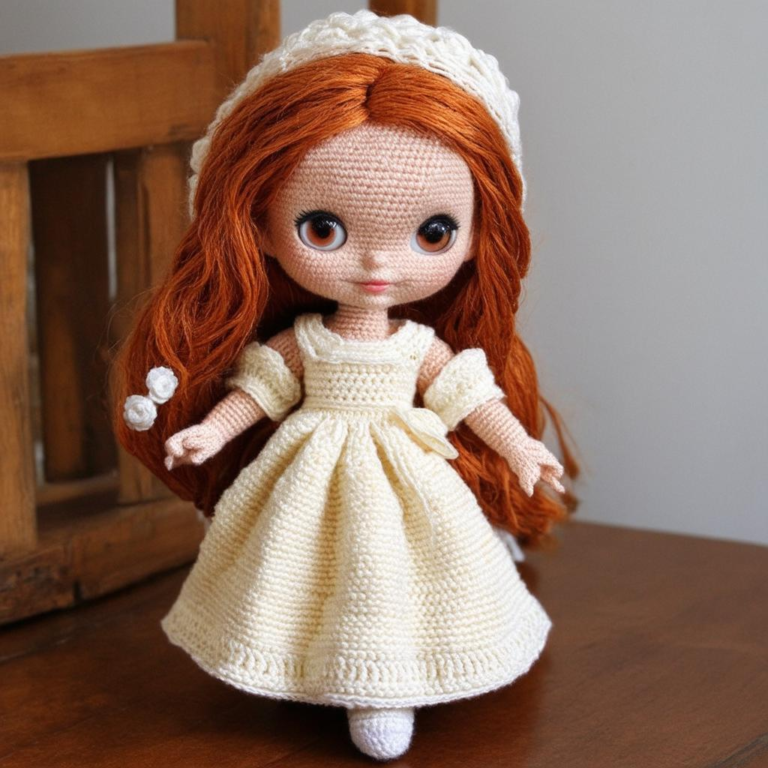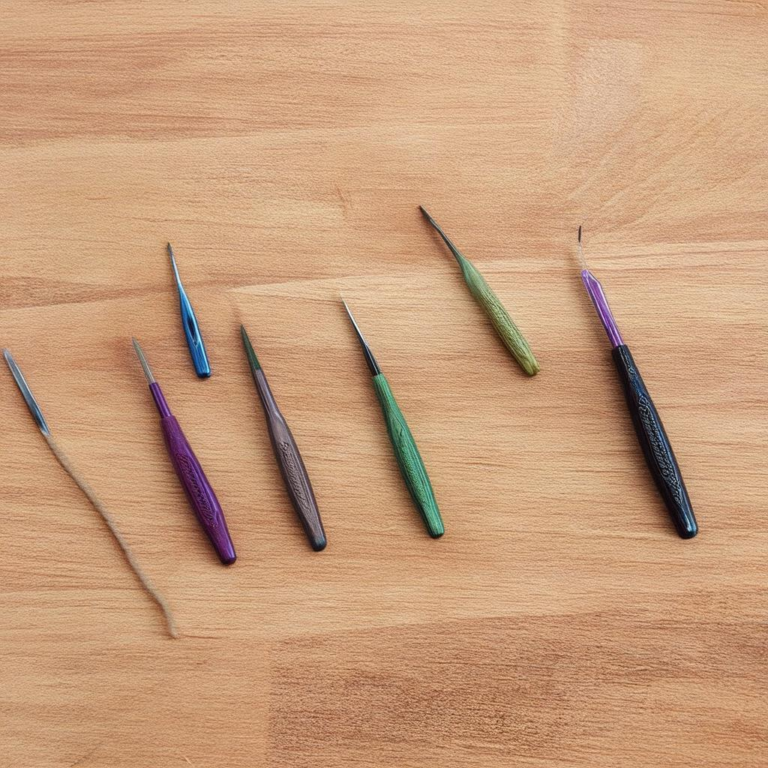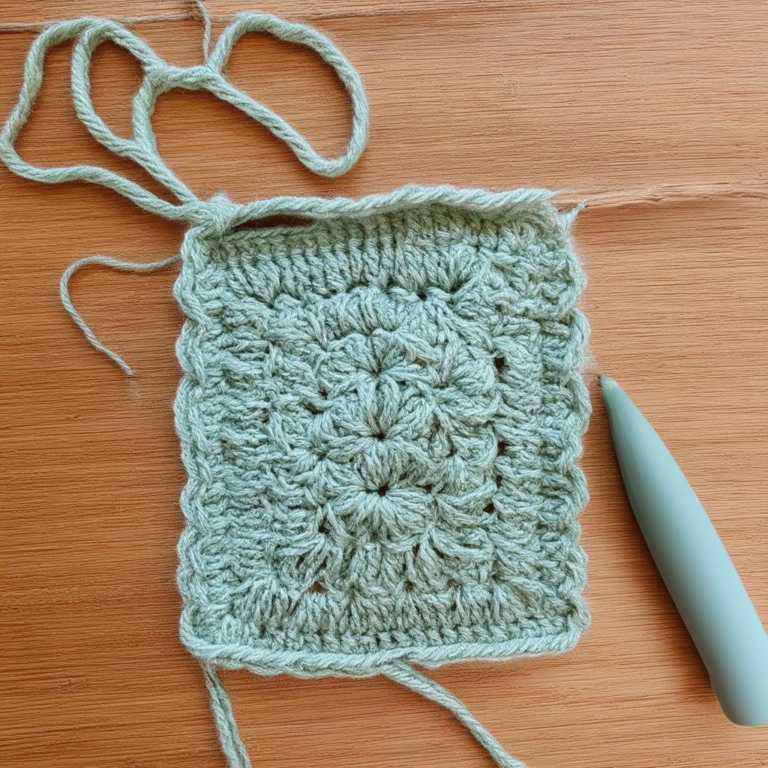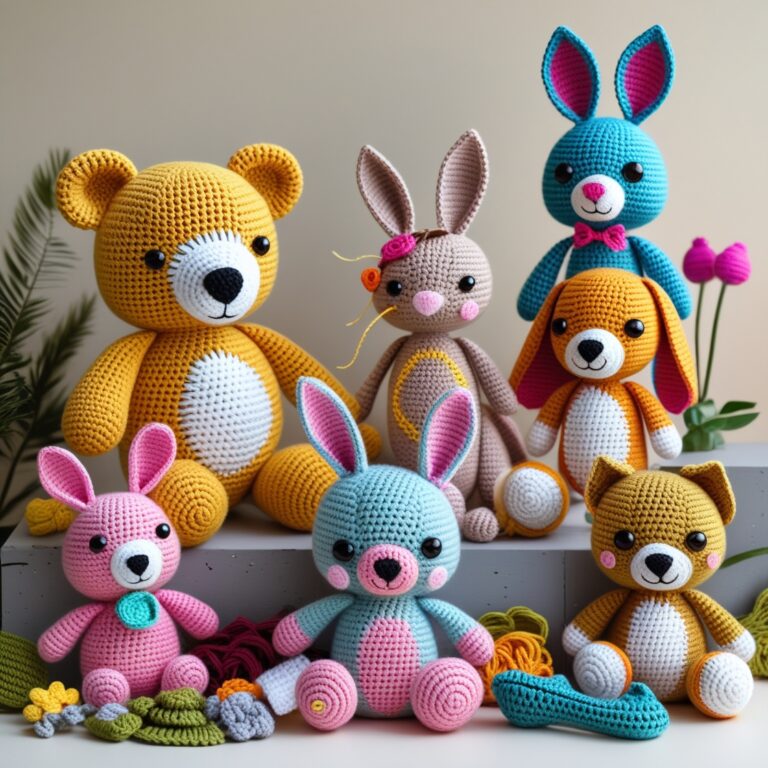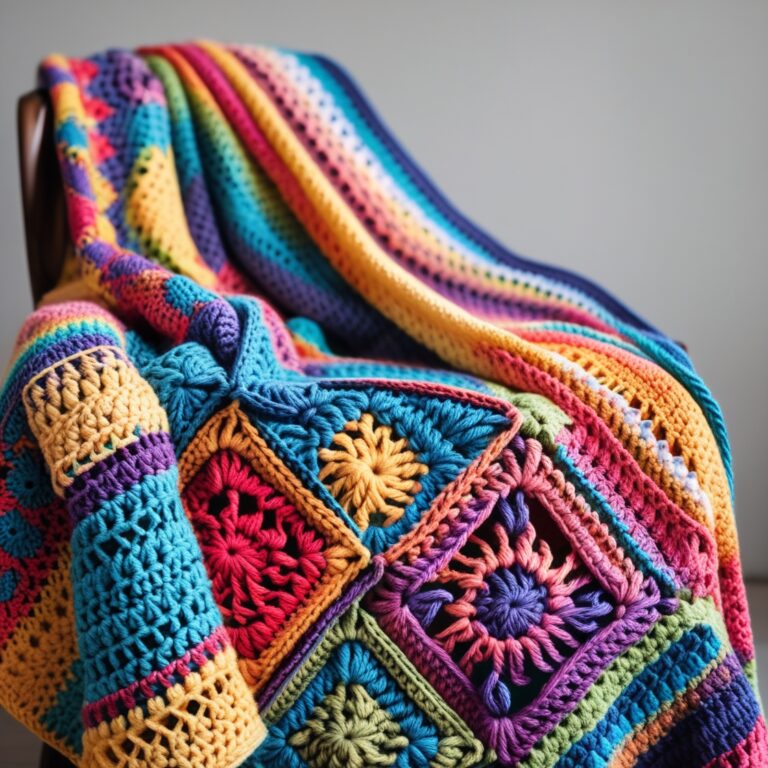[Check out the latest arrivals now!](https://www.amazon.com/s?k=free crochet animal patterns&s=date-desc-rank&tag=smartymode-20)
Best Free Crochet Animal Patterns: Compare, Review & Find Your Perfect Project!
The allure of crafting something adorable with your own two hands is undeniable, and when it comes to crochet, few things are as charming as a meticulously crafted animal. Whether you’re a seasoned crocheter or picking up your hook for the first time, the world of free crochet animal patterns offers a treasure trove of possibilities. From cuddly teddy bears to whimsical unicorns, the sheer variety available can be both exciting and overwhelming. This article serves as your definitive guide, exploring the best free options, comparing styles and complexity, and ultimately helping you find the perfect project to unleash your inner artist. We’ll delve into the specifics, discuss material choices, and offer tips to ensure your creations turn out exactly as you envision.
[Explore Top Rated free crochet animal patterns on Amazon.]
Navigating the World of Free Crochet Animal Patterns
Before diving headfirst into specific projects,it’s essential to understand the landscape of free crochet animal patterns. Not all patterns are created equal. Some are incredibly detailed with photo tutorials, while others offer simpler, more basic instructions. Understanding what you’re looking for, and at what experience level you can expect a accomplished outcome, will set you up for success in your crochet journey.
Understanding Pattern Types & Complexity
Amigurumi: This Japanese style of crochet focuses on creating small, stuffed creatures with a distinctive rounded, frequently enough cartoonish look. Amigurumi is extremely popular for crochet animal patterns because of its simple shapes which are often easy to assemble.
Flat Crochet: Some patterns create animals that are flat, perhaps for appliques or wall hangings. These are generally quicker to complete and can be less complex than three-dimensional pieces.
Realistic vs. Stylized: Patterns vary dramatically in how realistic they aim to be. Some focus on accuracy, while others embrace a more whimsical, stylized aesthetic.
Beginner, Intermediate, and advanced: Just as with any craft, crochet patterns come with varying levels of difficulty. Beginner patterns often focus on basic stitches and simple shapes,while advanced patterns introduce more intricate techniques.Look for information about skill level to avoid frustration and ensure a fun project.
Written Instructions vs.Charts: Patterns are frequently enough presented either with written instructions or charts which represent stitches visually. Sometimes a pattern will include both. Understanding the difference, and preference, are important.
Were to Find Quality Free Patterns
the internet is rich with resources for free crochet animal patterns, but the sheer quantity can feel overwhelming. Here’s a guide to make your search more effective and help you discover great designs:
Specialized Crochet Websites: Websites dedicated to crochet, such as Amigurumi.com [1], often have large collections of free patterns. These are great places to start your search thanks to the large user communities and dedicated approach.
Bloggers and DIY Sites: Many individual crafters maintain blogs or websites where they freely share their patterns. Look for those with excellent tutorials, step-by-step photos, and detailed instructions. Examples include The Nicole Chase [2] and MyCrochetory [3].
Social Media platforms: Pinterest [4] and other social media platforms can be fantastic for inspiration, often linking directly to a usable free pattern. though,be sure to double-check the accuracy and credibility of the pattern before engaging in a complex project.
Ravelry and Other Online Communities: Crochet communities can be found across the internet, and many individuals will share patterns freely within these connected groups. Ravelry is a popular option.
Yarn Company Websites: Sometimes yarn brands will offer free patterns on their website to showcase ways of working with their product. Keep an eye out for these.
Specific Pattern Repositories: Sites like LoveCrafts [5] often have curated collections of free patterns across a variety of specialties, including toys, allowing for an easy-to-search database for your specific project need.
[Explore Top Rated free crochet animal patterns on Amazon.]
Top Free Crochet Animal Patterns: Detailed Reviews & Comparisons
Finding free patterns isn’t just about locating a design.It’s crucial to assess the quality of the instructions, the materials required, and the overall appeal of the final product. Here’s a comprehensive review and comparison of some of the best free crochet animal patterns across different levels and categories.
Adorable Amigurumi Projects for Beginners
For those just starting their crochet journey, these projects offer a gentle introduction to amigurumi techniques and the satisfaction of creating adorable creatures.
Simple Spherical Animals: Look for patterns that focus on basic spheres which can form the basis for many animal designs (e.g., a basic chick, a round bear). These designs teach basic decreases and increases.These are usually fast to finalize and will allow for a quick sense of completion, essential for confidence-building.
Key Features: Basic single crochet stitches, simple shaping, and minimal assembly.
Materials: Basic worsted weight yarn, stuffing, safety eyes (if using).
Benefits: Great for practice and building basic skills, quick to complete, excellent choice for those who have never crocheted before. Potential Drawbacks: May have limited features if not adapted and customized.
Simple Crochet Mouse: A simple design focused on basic increases, decreases and using a minimal amount of yarn.
Key Features: Simple stitches, small details like ears, tail, and the use of embroidery to create features.
materials: Scrap worsted weight yarn, stuffing, safety eyes (if using) or embroidery floss for eyes, embroidery needle for applying details. Benefits: Excellent use for scraps and simple to scale when using different yarns.
Potential Drawbacks: Can be too simple for more experienced crocheters.
Classic Crochet Elephant: A simple, rounded shape can help beginners understand shaping. The trunk and ears offer an opportunity to begin understanding small detailed components.
Key Features: Primarily single crochet. Simple rounded body, slightly more complex trunk, ear shaping. Materials: Light colored worsted weight yarn, stuffing, safety eyes (if using), accent yarn.
Benefits: Instructive for learning to create details within a larger form. Good introduction to amigurumi techniques. Potential Drawbacks: Some beginners find shaping large, round bodies difficult.
Intermediate Level Crochet Animal Patterns for More Experienced Crocheters
These patterns introduce more complex stitches, shaping techniques, and assembly methods, presenting a good challenge for crocheters ready to progress.
detailed Amigurumi Bear: Look for patterns with more complex shaping than just simple spheres. Consider designs that incorporate different stitches for texture and detailed features such as facial expressions. Key Features: More complex shaping, perhaps textured stitches and more detailed assembly involving more than just a few components.
Materials: Worsted weight yarn in multiple colors, stuffing, safety eyes or embroidery thread for eyes, optionally: felt for details.
Benefits: Enhances shaping and assembly skills, creates a more detailed and professional-looking finish.
Potential Drawbacks: Requires patience and attention to detail. May involve multiple color changes.
Realistic Crochet Cat or Dog: Patterns that aim for a realistic appearance rather than a stylized outcome introduce crocheters to more complex techniques.
Key Features: Use of multiple colors and stitch types to create a realistic textured feel and realistic shapes.
Materials: Multiple colors of worsted weight yarn, stuffing, safety eyes or embroidery thread for eyes, optionally: small amounts of textured yarn.
Benefits: Gives the experience of building something realistic, good for practicing color work.
Potential Drawbacks: Can be time-consuming. Requires precise stitch counting and consistent tension to achieve a good result.
Crochet Dragon or Dinosaur: These are highly popular and frequently enough incorporate more complex shaping and assembly as they will likely be composed of various parts. Key Features: Shaping of limbs, creating small details such as horns, spines, or wings, assembly of multiple separate pieces.
Materials: Multiple colors of yarn, stuffing, safety eyes (if using) or embroidery floss for eyes, potentially some wire for shaping.
Benefits: enhances understanding of shaping limbs and attaching details. Great for those seeking a challenge.
Potential drawbacks: Can be time consuming. Can require some degree of crochet experience to guarantee a successful outcome.
advanced Crochet Animal Projects for Experienced Crafters
For seasoned crocheters looking for a true challenge, these advanced patterns involve intricate techniques, complex designs, and the use of multiple colors and materials.
Large Detailed Animals: Complex designs with very detailed shapes, realistic features, and advanced techniques with multiple components would make a good challenge.
Key Features: Advanced shaping techniques, colorwork, intricate detailing such as claws, whiskers or scales, may include internal frames.
Materials: Various yarn types and colors, stuffing, safety eyes, embroidery threads, wire or frame materials.
Benefits: Creates a stunning final product, showcases advanced crocheting skills and mastery.
Potential Drawbacks: Requires a important understanding of various crochet stitches and techniques, and multiple practice attempts may be required.
Posable Creatures: Look for patterns that involve joining elements in ways that give the final creation articulation and can stand on their own.
Key Features: may involve wire armatures for posability using joints and other methods of articulation, involves complex construction techniques and assembly.
Materials: Various types of yarn, wire or internal frame material, stuffing, safety eyes or embroidery thread for eyes.
Benefits: Creates more versatile and dynamic final products, suitable to make for play and display.
Potential Drawbacks: Will require extensive experience in handling materials and a strong understanding of articulation techniques,as well as the technical aspects of creating a frame within the project itself.
Realistic Crochet Birds or Insects: These are commonly advanced projects that require an intricate approach and a strong understanding of realistic detailing if properly realized.
Key Features: Intricate detailing, delicate structural shaping, use of multiple colors and textures, may require the addition of small, detailed items such as feathers or antennae.
Materials: Various yarn styles and colors, wire for antenna creation if applicable, stuffing, safety eyes or embroidery thread for eyes, additional materials that allow for texture of wings or other parts of the creation.
Benefits: Highly rewarding for the experienced crocheter who enjoys intricate work, allows for complex detailing.
Potential Drawbacks: Requires incredibly precise stitching and consistent tension. May involve numerous pieces and delicate assembly.
[Explore Top Rated free crochet animal patterns on Amazon.]
Essential Materials and Techniques for Success
Before starting your project, it’s crucial to gather the right materials and familiarize yourself with the basic techniques. this section will guide you through the essentials.
Choosing the Right Yarn
Fiber: Common choices include acrylic, cotton, and wool, each with different properties. Acrylic is affordable and machine-washable, cotton is breathable and better for warmer climates, and wool is soft and warm but often requires handwashing. Consider how often the final product will be handled when choosing your fiber.
Weight: Pattern instructions will specify the yarn weight (e.g., worsted, DK, sport). Sticking to the recommended yarn weight can be essential for the final proportions.
Color: Choose colors that suit your design and preferences. For multi-color patterns, gather all yarns and make sure they work harmoniously together. It’s also essential to buy enough yarn to finish the project as dye lots can sometimes differ substantially.
Availability: Choose a yarn that is generally available and within your budget. Online vendors may offer variety, but local sources will allow for a more hands-on experience and the ability to assess the yarn before purchase.
Essential Crochet Tools
crochet Hook: Use the hook size indicated in your pattern. For basic amigurumi, hook sizes from 2.5mm to 4mm are common but always double check the hook that works with your specific pattern and thread type.
Scissors: It will be helpful to have small craft scissors that allow you to cut yarn without being cumbersome. It’s best if they have a sharp point, so they can be used for detailed tasks if needed.
Stuffing: Polyester fiberfill is a popular choice for stuffing amigurumi since it holds its shape well, is lightweight, and is washable. use small amounts at a time for better shaping.
Tapestry Needle: This blunt needle is essential for weaving in ends carefully and joining pieces.A metal needle can sometimes work better than a plastic one, but it depends on individual preferences.
Stitch Markers: Useful for marking rounds, stitch starting points, or complex stitch patterns. The use of stitch markers can assist in accuracy and prevent the need to re-count rows when attempting more complex patterns.
Safety Eyes (Optional): If using safety eyes be sure to securely fasten them with their backings and to make sure they are safe for play if children will have direct access. If sewing details is new, be sure to practice before applying your eye creation so you know how much yarn and movement you are pleasant with to create the desired effects.
Basic Crochet Stitches and Techniques
Single Crochet (sc): The most common stitch for amigurumi, creating a tight, dense fabric structure. Variations of this basic stitch are often used to create shape changes, so try to learn how to increase and decrease accurately using the single stitch to have a confident starting point.
Double Crochet (dc): Sometimes used to form larger,more open textures than single crochet but is less commonly used in amigurumi. Understanding this stitch can be critically important for learning other advanced stitch combinations.
Magic Ring/Circle: Used to start amigurumi projects,creating a tight center without a hole. Learn how to properly tension the circle to prevent future openings. Increasing and Decreasing: Essential techniques for shaping amigurumi projects.as well as learning to count properly be sure to practice the stitch changes so you can adjust row sizes gradually and create the desired form. Changing Colors: Learn multiple techniques for changing colors in crochet, especially when working in the round. Understand the different methods of changing so you avoid visible stitches when working towards a complex design.
Weaving in Ends: Crucial for securing loose ends and ensuring your project looks neat and professional.Many methods are available,but be sure to be tight with tension without pulling the stitches so they are visible on the finished product.
[Explore Top Rated free crochet animal patterns on Amazon.]
Tips and Tricks for Successful Crochet Animals
Creating perfect crochet animals often requires more than just following a pattern. Here are some essential tips to elevate your craft:
Read the Pattern Carefully: Before starting, take the time to thoroughly read the entire pattern, including any notes or abbreviations. take time to understand complex parts or pattern specifics before engaging to prevent frustration and to be able to focus on the design itself.
Swatch First: If working with a new yarn or pattern, it’s always a good idea to make a swatch to check your gauge. Gauge is how many stitches and rows you will create per inch. When the gauge is not accurate, it means that your final product can be either too big or too small for the stated design, so learning to create a swatch helps to mitigate any sizing issues.
Count your stitches Frequently: especially in the beginning, double-checking your stitch count at the end of each round will reduce potential errors and help maintain the integrity of the pattern. Even experienced crocheters need to focus on stitch counts to avoid mistakes when engaging with complex designs. If you feel you are prone to losing your place, consider using a row counter.
Use Stitch Markers: Especially when working in the round, markers can definitely help you keep track of the beginning points of more complex patterns. If not using them, count each row to prevent miscalculations.
Stuff Firmly: Stuff your amigurumi tightly to give it structure and shape. However, don’t overstuff, as this can distort the shape, prevent even tension throughout the stitches, and put extra stress on the seams, increasing the likelihood of splits.
Weave in Ends as You Go: Instead of waiting until the end, weave in loose ends as you crochet different components to prevent a mountain of work at the end. This will also make sure that your ends do not shift during final assembly. Practice Makes Perfect: don’t be discouraged if your first few projects are not perfect.Keep practicing to improve your skills. Try creating small test pieces to practice specific techniques such as specific stitches or shaping methods before engaging in a full project. The more practice you have the more confident you will become.
Join Online Communities: sharing experiences and asking questions is a great way to learn and grow as a crocheter. Online crochet communities are great sources for finding help and getting positive feedback.
[Explore Top Rated free crochet animal patterns on Amazon.]
Conclusion: Your Journey into Crochet Animal Magic Begins Now
The world of free crochet animal patterns is a magical realm waiting to be explored. From the simplest amigurumi to the most intricate posable dragons, this hobby combines patience, creativity, and the joy of creation. This comprehensive guide has equipped you with a wealth of knowledge,from understanding pattern structures and navigating resources to choosing the right tools and materials. armed with this knowledge, you’re prepared to embark on your unique crochet animal adventure. Whether you choose a simple companion animal or a complex creature for display,remember that every stitch is part of your unique story as a creator.use this information to guide your journey and embark on creating your own stunning crochet animal creations.
[Shop budget-friendly options now!](https://www.amazon.com/s?k=free crochet animal patterns&s=price-asc-rank&tag=smartymode-20)

